|
 Secure Site
Secure Site
|
 |
Archive for the 'Well-being' Category
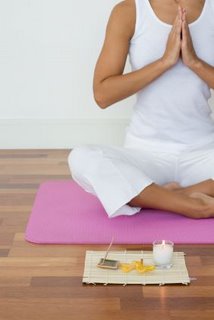 stop stressing Convinced it will rain on the party you’re planning this weekend—and it’s only Monday? Turns out, those six days of unnecessary, perceived stress quite literally can make you “worried sick,” according to a new study.
Perceived stress versus actual stress: “Actual stress is something you experience in the moment, like a giving a presentation at work, or fighting with your spouse,” says Jim Claussen, a chiropractor from Chicago. On the other hand, if you’re worried about the economy crashing or your 401(k), then you’re stressing over something you have no control over, and your stress is perceived, he says. Your body can recover from actual stress, but long-term perceived stress puts you in constant fight-or-flight mode, fatigues your adrenals, and compromises your immune system. “It’s as if you were to prop your car up on blocks, weigh the gas pedal down, and let it run all night,” says Claussen. “You can’t expect to walk into the garage the next morning and have any gas left.” The study found that people with the highest perceived stress had 80 percent fewer protective antibodies in their blood than those who were actually stressed out. Try these tips to help you chill out:
Put stress on a shelf. “It’s definitely an art,” says Claussen, “but if you can find an off button for your stressor, you’ll waste a lot less time and effort worrying about something you can’t control.” Remember that party you’re fretting about? Put your worries about the weather “on the shelf,” and come Saturday when it’s time to deal, “pull it off the shelf.”
Breathe with your belly. Lie down on the floor with a book on your belly. Inhale through your nose, feel the book rise, and hold for four seconds. Exhale all the air out through your mouth, letting the book lower. Repeat four times. Deep inhales stimulate your lungs and trigger the parasympathetic nervous system to put you in a calming state while deep exhales help drain the lymphatic system.
Meditate. Set your Zen Timer with chime for 30 minutes. Take these 30 minutes out of your day to meditate, do yoga, or t’ai chi to help reduce stress hormones, slow down your heart rate and blood pressure, and balance your system.
adapted from Natural Solutuons, by Nicole Duncan, February 2009
The Walnut Digital Zen Clock’s long-resonating Tibetan bell-like chime makes waking up and meditating a beautiful experience – its progressive chimes begin your day with grace. When the clock’s alarm is triggered, the acoustic chime bar is struck just once … 3-1/2 minutes later it strikes again … chime strikes become more frequent over 10 minutes … eventually striking every 5 seconds until shut off. As they become more frequent, the gentle chimes will always wake you up – your body really doesn’t need to be awakened harshly, with a Zen Clock you’re awakened more gradually and thus more naturally. Unlike artificial recorded sounds coming out of a tiny speaker in a plastic box, natural acoustic sounds transform your bedroom or office environment.
The Digital Zen Timer & Clock also serves as a countdown and interval timer for yoga, meditation, bodywork, etc.; and it can also be set to chime on the hour as a tool for “mindfulness.”
 Yoga Timers with gentle chimes Now & Zen’s Meditation Timer Store
1638 Pearl Street
Boulder, CO 80302
(800) 779-6383
Posted in Chime Alarm Clocks, Well-being
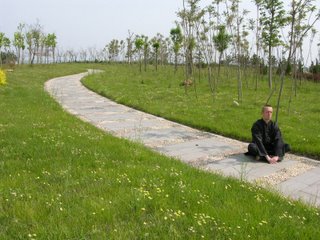 downtime I’m not great with downtime. In line at the post office, I whip out my cell phone and delete old text messages. When I’m stopped at a light, I retrieve a cloth from the glove compartment and dust the dashboard.
At home, I try to snuggle with my pug and relax, but I can’t. I get up to unload the dishwasher, check my e-mail, sort socks, or get a jump on tomorrow’s research and writing. Clearly, I feel better ticking items off my to-do list. The question is: Would I be better off just letting my mind drift?
Truth is, the urge to occupy idle time is tough to fight. We’re a nation of doers, after all: bustling workaholics who have a hard time sitting still (unless it’s in front of the TV). As much as we try to crowd it out, however, experts tell us that boredom is an essential part of the human experience. It’s a counterbalance to all that busyness. In fact, some argue it’s a gateway to peace.
“Create space in your life,” says Body+Soul life coach Cheryl Richardson, “and you’ll find serenity and inspiration on the other side.”
If a little thumb-twiddling can truly lead to better things, why do many of us so desperately avoid it? To demystify our aversion to idleness, we asked Richardson and psychotherapist Richard Winter, M.D., to explain what’s fueling our discomfort with those frightfully unscheduled moments. Here, they share the top three reasons we’re so down on downtime, as well as offer up ways to embrace it — and find deeper satisfaction in the everyday.
We’re Overstimulated
Remember when the doctor’s waiting room was just that — a place to sit, with nothing to do but wait? Now, with TV screens popping up in medical offices, taxicabs, elevators, and even the checkout line (not to mention the lure of your cell phone, iPod, and BlackBerry), every spare moment provides another opportunity for stimulation. As a result, the empty pockets of time we once took for granted have vanished.
 schedule downtime The problem with overstimulation, says Winter, author of “Still Bored in a Culture of Entertainment,” is it creates a “psychological callus” that hardens over time and can eventually keep us from responding with depth to anything or anyone. “Because we can’t discriminate between so many options, we completely shut down our attention to almost everything.”
That, he argues, essentially leaves us feeling passive and craving temporary relief from boredom. Worse, we end up with no time to reflect on our lives, making it harder to forge meaningful connections with the people around us.
Find joy in the humdrum. Recharge your inner resources by reacquainting yourself with quiet. This can prove surprisingly hard if you’re used to nonstop stimulation, so aim for specific actions. Turn off the TV after a certain time each evening. Drive one way of your commute without listening to NPR.
Better still, take a calming walk three nights a week after dinner — and leave the iPod home. The physical activity will satisfy your need to do something, all while energizing you in a way that watching Law & Order can’t. By welcoming a little idle time and its attendant reflection, says Winter, you’ll soon come to “delight in the ordinary again.”
adapted from Body + Soul October 2008
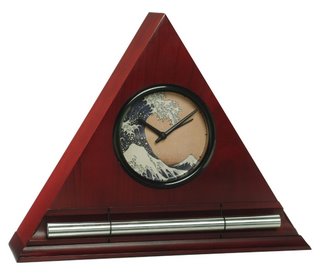 Zen Clock for Timing your downtime with a gentle chime Now & Zen’s Alarm Clock Shop
1638 Pearl Street
Boulder, CO 80302
(800) 779-6383
Posted in intention, Meditation Timers, Meditation Tools, mindfulness practice, nature, Now & Zen Alarm Clocks, Walking Meditation, Well-being, Zen Timepiece by Now & Zen, Zen Timers
 how to have get more energy When it comes to cultivating energy, you probably never did it better than when you were a toddler. You’d come barreling out of bed in the morning, eyes wide and arms full of toys. These days, you’re lucky if you can rouse yourself with multiple alarm clocks and a few cups of coffee. Snacks, if you have time to eat them, aren’t the healthy kind. As for naps and early bedtimes, they happen on rare, unplanned occasions, usually when you’re down with a cold or flu, or exhausted from running yourself ragged all week. With habits like these, it’s no wonder that more than one-third of Americans say they’re so tired that it interferes with work.
Depleted energy interferes with our lives. Feeling energetic “means having the vitality to do the things you want to do,” says Mark Hyman, M.D., editor-in-chief of the journal Alternative Therapies in Health and Medicine and author of “UltraMetabolism.” That vitality isn’t just a state of mind — it’s a physical condition. Each of our cells contains hundreds of mitochondria, tiny “power plants” that combine the oxygen we breathe with the food we eat and then burn the combination to create energy.
 increase vitality with a mindfulness practice We know this process as metabolism. How energetic we feel largely depends on how well our mitochondria are functioning. To function optimally, they need quality fuel: a wholesome, varied diet, restorative sleep, and plenty of oxygen from regular exercise. But rather than enhance our vitality, we often sabotage it with “counterfeit energy” — stimulants like caffeine that we think give us more pep but only drain our energy in the long run.
Getting your energy back is possible. Start by simply looking at your day. From morning until night, energy leaks abound. These daily habits may seem perfectly innocent, but over time they impair your body’s vitality.
Waking up in the morning should be as pleasant as falling asleep at night. The Zen Alarm Clock’s gradual, gentle awakening is transformative.
The Walnut Digital Zen Clock’s long-resonating Tibetan bell-like chime makes waking up a beautiful experience – its progressive chimes begin your day with grace. When the clock’s alarm is triggered, the acoustic chime bar is struck just once … 3-1/2 minutes later it strikes again … chime strikes become more frequent over 10 minutes … eventually striking every 5 seconds until shut off. As they become more frequent, the gentle chimes will always wake you up – your body really doesn’t need to be awakened harshly, with a Zen Clock you’re awakened more gradually and thus more naturally. Unlike artificial recorded sounds coming out of a tiny speaker in a plastic box, natural acoustic sounds transform your bedroom or office environment.
adapted from Body + Soul, September 2006
 gentle wake up clock with chime
Now & Zen’s Chime Alarm Clock Store
1638 Pearl Street
Boulder, CO 80302
(800) 779-6383
Posted in intention, Meditation Timers, Meditation Tools, mindfulness practice, sleep, Sleep Habits, wake up alarm clock, Well-being
 can yoga help you fall asleep? If you’re one of the millions of sleep-starved Americans with a dwindling supply of fence-jumping sheep, try introducing a few Downward Dogs to your bedtime menagerie. A recent clinical study at Boston’s Brigham and Women’s Hospital confirmed that bedtime yoga can help chronic insomniacs significantly reduce their tossing-and-turning time.
The results are most likely linked to yoga’s soothing effect on the central nervous system, says lead study author Sat Bir Khalsa, Ph.D., assistant professor at Harvard Medical School. In insomniacs, levels of the stress hormone cortisol are elevated,” he explains. Yoga can reduce cortisol levels, which is why you have that feeling of calm after practicing it.” And while the study’s poses were selected for their sleep-promoting effects (see below for instructions), Khalsa says most types of yoga, practiced regularly at any time of day, should bring on more nighttime ZZZs. Sleep-promoting yogic breathing exercises
 yoga exercises for insomnia Exercise 1
Sit with a straight spine, with your head erect and chin lightly tucked in. Extend both arms up to form a 60-degree angle (almost vertical), with wrists straight and palms and fingers extended flat and facing up. Keep elbows straight. Begin slow deep breathing through the nose. As you inhale, let your abdomen extend out as though it were being filled with air. As the inhale continues, let your chest expand. At the end of the inhale, pause briefly with your breath suspended; do not to lock your throat to hold the breath, but rather suspend the breath by lifting and suspending the motion of the chest. As you start to exhale, let the chest contract first. As the exhale continues, pull in your abdomen slightly as though it were being emptied of air. Pause briefly at the end of the exhale before beginning the next inhale. The breath rate should be four breaths per minute or slower (15 seconds or longer for each complete inhale/exhale). It is important that this breath, as with all of the breathing in these exercises, is done through the nose. Keep your eyes closed during this exercise, and focus your mental attention on the flow of the breath. Continue for 2 to 3 minutes using your zen timer in repeat mode. At the end, inhale deeply and hold for 10 seconds. Exhale, and let your breath relax as you keep your mental focus on the flow of the breath for about 1 minute with eyes closed.
 Yoga Timer & Chime Alarm Clock by Now & Zen, Inc. - Boulder, CO Exercise 2
Sit with a straight spine, with your head erect and chin lightly tucked in. Extend the arms out to the sides parallel to the ground. Bend the wrists with the fingers pointing straight up. (Your hands look like you’re pressing out toward two walls.) Begin slow deep breathing as described in Exercise 1. Continue for 2 to 3 minutes. At the end, inhale deeply and hold for 10 seconds. Exhale, and let your breath relax as you keep your mental focus on the flow of the breath for about 1 minute with eyes closed.
The Digital Zen Clock serves as a countdown and interval timer for yoga, meditation, bodywork, etc.; and it can also be set to chime on the hour as a tool for “mindfulness.”
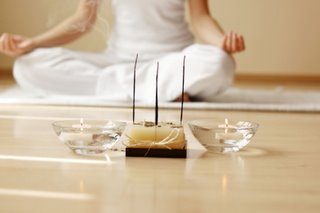 yoga for better sleep Exercise 3
Sit with a straight spine, with the head erect and the chin lightly tucked in. Press the palms together in front of the chest. The fingers of the right hand fingers go over the side of the left index finger and onto the back of the left hand. It is a “cross-lock” with the fingers crossing each other at 90 degrees. Squeeze the hands toward each other with continuous pressure. Begin slow deep breathing as described in Exercise 1. Continue for 2-3 minutes. At the end, inhale deeply and hold with a final push together of the hands for 10 seconds. Exhale, and let your breath relax as you keep your mental focus on the flow of the breath for about 1 minute with eyes closed.
Exercise 4
Sit with a straight spine, with your head erect and chin lightly tucked in. Place your hands in your lap, palms facing up, right hand over the left. The thumb tips touch and point forward. Keep the eyelids half closed. Look downward past the tip of your nose. Inhale in four equal segments through the nose. Mentally recite the sound scale, “Sah Tah Nah Mah”, with one syllable for each stroke of the breath. Then hold the breath by lifting and suspending the motion of the chest. As you hold the breath, mentally repeat the scale four times, for a total of 16 beats. Then exhale in two equal and powerful strokes out the nose. Mentally recite “Wah-Hay” on the first segment out, and “Goo-Roo” on the second stroke out. Continue for 5 to 31 minutes. At the end, inhale deeply and hold for 10 seconds. Exhale, and let your breath relax as you keep your mental focus on the flow of the breath for a few minutes. If you wake up in the night and have trouble falling back asleep, do this exercise for 5 to 11 minutes.
adapted from Body + Soul, April/May 2007
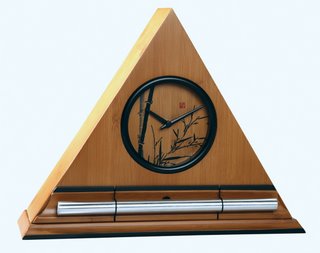 Bamboo Zen Clocks, progressive chime clock and timer for yoga Now & Zen’s Yoga Time & Chime Alarm Clock Shop
1638 Pearl Street
Boulder, CO 80302
(800) 779-6383
Posted in Insomnia, intention, Meditation Timers, mindfulness practice, sleep, Sleep Habits, Well-being, yoga, Yoga Timer, Yoga Timers by Now & Zen
 Awareness As a sustainable communities professor at Dominican University of California, I love to give my students strange assignments and then watch them grow. In turn, they’ve taught me much about coming into the right relationship with life.
Modern living involves high levels of sensory input—much of it meaningless or even nasty. So we shut down. Our magnificent equipment—which allowed our ancestors to feel a shift in the breeze, smell ripening fruit, hear every footfall and see subtle color changes—goes into standby mode. But we need our senses to tell us what we crave (birdsong, sunshine, a gurgling stream, ripe fruit) and what we reject (leaf blowers, smog, clutter). Our senses bring us to life.
So at the beginning of class, I ask students to pause. “Close your eyes, take a deep breath and relax. What do you smell? What do you hear—near, far, steady, intermittent? How does the air feel on your skin—dry, moist, moving, still, cold, warm? Now slowly open your eyes, and notice shapes, colors, light, dark, near, far. What appeals to your senses, and what is a turnoff? What are you aware of now that you weren’t before?”
Suddenly, the students are aware of both the unpleasant and the delicious. They dislike the sounds of traffic, ticking clocks, and mechanical heating and cooling systems. And if there is even one green growing thing, one ray of sunshine or one bird singing, they fall in love with it. In fact, if the weather is decent, they ask, “Can we have class outside?”
Where are you?
At the end of class, I send students home with an expanded assignment: At least once a day, stop and notice how the air feels, where the sun is, the wind’s direction, the terrain, vegetation, critters; then write it all down. This exercise has changed a few lives.
Matt, an urban apartment dweller, realized that he’d been tolerating noise levels that caused tension by day and insomnia by night; he moved, and now he feels like a different person.
Cheryl lives in a suburb and takes the bus to work. She recently began walking to a neighborhood bus stop rather than driving to a central stop, partly so she could spend more time outdoors. She became more aware of trees, birds and weather conditions and more familiar with her neighbors. She noticed that birds were more active and vocal when the sky was clear; she noticed when the geese started flying south and missed them when they were gone. Observing the trees, she noticed the wind’s direction. “The peaceful window of time to myself first thing in the morning helps me start my day with more clarity and calmness,” she says. “And walking home at night, I enjoy gazing at the beautiful night sky and the changing moon.”
Josh lives near the ocean. Sensory tune-ins made him more aware of the breeze, and he wanted to play with it. He put up a wind sock and soon noticed that the wind usually came from the northwest. But why? He explored regional wind patterns, and I encouraged him to study storm fronts and cyclonic wind patterns. Then he bought a little weather station to keep track of wind, air temperature and barometric pressure. After I suggested that he also note his physical and emotional feelings, he had an epiphany: His moods were often directly related to weather conditions.
Cheryl and Josh are beginning to grasp that nature is everywhere and that everything affects everything else. This also has a practical application: They are gaining observation skills that will make them good ecological designers, able to create habitations that are powered by natural elements and friendly to the biosphere.
 balancing rocks In a culture that treats our bodies as isolated machines, it’s world-changing to notice our craving for harmony with other natural phenomena—and starting to learn how to satisfy it. Getting outdoors, listening to our bodies, watching birds, tracking breezes and cycling with the sun are enjoyable in themselves, but they lead us to something much larger: an understanding of how the world works. And once we get it, there’s no going back. The insights keep multiplying, and we’re motivated to greater and deeper actions by feeling truly, deeply alive.
As my student Brian says, “When I stop everything and sit as part of it all, I feel the connection rather than intellectualizing interconnectedness.” Because everything is interconnected, we can start our journey anywhere, with deceptively simple steps: stop, look, listen, feel.
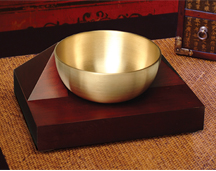 Singing Bowl Meditation Timer from Now & Zen, Inc. - Boulder, CO The Zen Timepiece (with Tibetan- Singing Bowl) serves as a countdown and interval timer for yoga, meditation, bodywork, etc.; and it can also be set to chime on the hour as a tool for “mindfulness.”
adapted from Natural Home Magazine, September/November 2009 by CarolVenolia
Carol Venolia is an eco-architect and co-author of Natural Remodeling for the Not-So-Green House (Lark Books, 2006). She teaches in the Sustainable Communities program at Dominican University of California.
 Chime Meditation Timers and Clocks with Chime in Bamboo, Walnut, Maple, and Black Lacquer Now & Zen’s Meditation Timer & Alarm Clock Shop
1638 Pearl Street
Boulder, CO 80302
(800) 779-6383
Posted in Insomnia, mindfulness practice, Natural Awakening, nature, Well-being
 walking in waves, a mindfulness meditation There is nothing more soul-renewing than a very long, meandering, aimless walk. And I do mean aimless — as in, “I’m heading out! I have no idea how long I’ll be or where I’m going!”
I started walking this way quite by accident, in the midst of recovering from the heartache and confusion of losing my job. I had been slothful through winter, alternating between insomnia and sleeps so deep I wasn’t sure what day it was when I woke. But with the changing light of spring, I was beckoned out of doors.
Finding Peace Amidst the Chaos
I was in Manhattan, and cities are excellent places for meditative walks. They’re full of interruptions and distractions, but there is always a bus stop or a person with directions within easy distance. So you can suspend the anxiety about getting lost or getting home.
And all that noise does for humans what shape does for bats: Even if we aren’t tuning into it, it guides our steps and signals danger or direction.
A city walk also delivers the pleasure of unexpected architectural discoveries: trolls clinging to the corners of buildings, swags of flowers carved into stone friezes.
These days I’m walking in the country, in coastal Rhode Island, where the blackbirds and foxes keep me company.
“Exploring the world is one of the best ways of exploring the mind,” writes Rebecca Solnit in “Wanderlust: A History of Walking.” The mind eventually begins to follow the feet, and a logjam of anxiety starts to come loose.
 Soul-Renewing Walking Meditation From Type A to Point Be
Long walks are the cure for writer’s block, lover’s block, mother’s block, friendship block, and any other kind of obstacle that we try to deliberately gnaw our way through, worrying over the problem and getting nowhere.
Better to let yourself really go nowhere and experience the delicious paradox of losing yourself to find yourself.
Walking with indirection has, at heart, a paradoxical benefit. When you stop making decisions for a little while, before you know it, you are filled with purpose, and the goals and paths of your life take on a new clarity.
It is by such grace that life unfolds; how lovely to suspend disbelief (I will never feel good again) and arrive at conviction: Life is wonderful! What a joy to be moving!
How-To: Walking as Meditation
1. Focus on your breathing. Paul Smith, walking-meditation instructor at Lake Austin Spa Resort in Austin, Texas, recommends inhaling slowly through your nose for 4 steps, keeping your breath in for 2 steps, exhaling for 4 steps, then waiting 2 steps before inhaling again.
2. Gently corral your wandering mind. Try repeating an affirmation in time with your breathing and steps. Smith recommends phrases such as “My life is a pleasure,” “I speak the truth and listen without judging,” or “I see all things in clarity.” Another trick: Visualize putting your worrisome thoughts in a balloon and letting go of the string.
3. Hold one hand behind your back. This will help slow you down. “Don’t let yourself get into race-walking mode,” Smith says.
4. Pay attention to your senses. Focus on vision first, which is easiest. Notice a plane overhead, leaves in the trees. Then notice sounds around you, the sun on your face, the smell of cut grass. Smith says, “These are ways to stay in the present.”
5. On a practical note: If you’re walking for distance, carry a little “mad money” in case you tucker out miles away. But no cell phone — or turn it off if you must have it on you.
adapted from Wholeliving.com, September 2010 by Dominique Browning
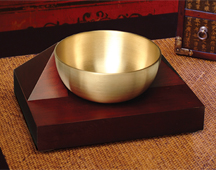 Singing Bowl Meditation Timer & Alarm Clock
Our Zen Timepiece’s – (a Singing Bowl Meditation Timer) acoustic 6-inch brass bowl-gong clock is the world’s ultimate alarm clock, practice timer, and “mindfulness bell.”
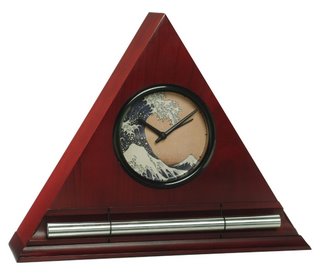 Hokusai Wave Zen Meditation Timer and Alarm Clock Now & Zen – The Meditation Timer Store
1638 Pearl Street
Boulder, CO 80302
(800) 779-6383
Posted in Chime Alarm Clocks, Hokusai Wave, intention, Japanese Inspired Zen Clocks, Meditation Timers, Meditation Tools, mindfulness practice, nature, Walking Meditation, Well-being, Zen Timers
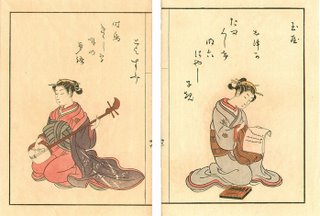 Shamisen and Letter by Harunobu 1. Spirituality
Experience your spirituality as a gift and a process.
2. Compliments
Don’t shrug off compliments; honor and remember them.
3. Experiences
Invest in experiences, not just objects.
4. Grace
Try doing even the most menial tasks mindfully and with grace.
5. Compassion
Anger has a way of evaporating in the face of compassion.
6. Calm
Calm is a place you create in the midst of chaos.
7. Simplicity
There’s no substitute for simple pleasures.
8. Laughter
Laugh a little — every day.
9. Physical
The spiritual and the physical cannot be separated; you need one to experience the other.
10. Pleasure
Find pleasure in the simplest tasks.
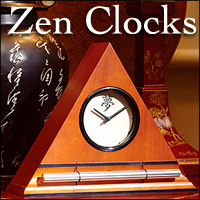 Zen Clocks with Chime from Boulder, CO adapted from Body + Soul Magazine, 2009
Now & Zen – The Zen Alarm Clock Shop
1638 Pearl Street
Boulder, CO 80302
(800) 779-6383
Posted in Meditation Timers, Meditation Tools, mindfulness practice, Well-being
 Instant Calm You’re cut off while driving. Your children erupt into a screaming fight. Or you’re five minutes away from an interview for the job of your dreams and your composure evaporates in a rush of anxiety. When life delivers adversity, stress is the common response. Your body kicks into action, preparing for a fight. The adrenal glands pump out adrenaline and noradrenaline — hormones that increase the heart rate, quicken breathing, raise blood pressure, and tense muscles. You’re ready to take on the perceived threat to your safety or well-being.
Of course, in reality we rarely run from foes or physically challenge them. As a result, we don’t burn off these powerful hormones, leaving them to “course through our bloodstream,” explains Dr. Herbert Benson, a pioneer in stress research at Harvard Medical School’s Mind/Body Medical Institute. In the short term, a pounding heart and sweaty palms can exacerbate the stressful emotions you’re already feeling. Left unchecked, this chemical mix sets you up for an array of physical and emotional problems, says Benson, including anxiety, depression, and intensified PMS and menopause symptoms.
The next time you are facing a stressful situation, stop yourself from spiraling out of control and bring yourself back to center.
Here is one exercise:
During a stressful event, your thoughts can intensify the storm inside of you. For example, say you’re about to give an important presentation to a large audience. You might find yourself worrying that you’ll get the facts wrong. This kind of worst-case-scenario thinking can increase the rush of stress hormones, worsening your prespeech jitters.
A technique known as “thought-stopping” can help you halt these negative, obsessive thoughts, says Dr. Kenneth Ruggiero, assistant professor in the department of psychiatry and behavioral sciences at the Medical University of South Carolina in Charleston. The first step, he says, is to literally call a halt to this train of thought. If you’re alone, say the word “Stop!” out loud. If you’re around others, think it to yourself. Some people even find it useful to pinch themselves to disrupt those stressful thoughts, says Ruggiero. “This gives you a moment of distraction,” he says, “and an opportunity to change your focus.”
Next, choose a positive thought on which you’ll focus instead, such as “I’ve given presentations before, and they went well” or “I know this material better than anyone in the audience.” In doing so, says Ruggiero, you swap a negative, stress-inducing thought for a positive one.
adapted from Body + Soul Magazine, 2010 by Erin O’Donnell
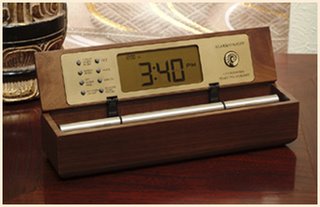 Walnut Wood Meditation Timers with Chime Now & Zen – The Zen Alarm Clock Store Headquarters
1638 Pearl Street
Boulder, CO 80302
(800) 779-6383
Posted in intention, mindfulness practice, Well-being
 How to Create Instant Calm A healing art based in traditional Chinese medicine, acupressure involves pressing specific points on your body to release muscle tension and stimulate circulation and the flow of qi, or life energy. Two points on the back of your neck known as the “gates of the mind” can ease stress and clear your mind, says Dr. Michael Reed Gach, founder of the Acupressure Institute in Berkeley, California, and producer of the guided self-care DVD “Acupressure for Stress Relief.” As an added bonus, he adds, pressing these points can stop headaches from developing.
Tilt your head back and place your thumbs at the top of your neck, just below the base of your skull, about three inches apart. Press these spots firmly but gently. “You don’t want to press on the skull, but just underneath it,” Gach says. “If your thumbs are weak or arthritic, use your knuckles instead.” As you press, take three to five slow, deep breaths. Finish by letting your hands float into your lap and your chin drop to your chest. Take an additional deep breath, and briefly scan your body to see how you feel. You can repeat this three times, set your Zen Chime Timer so that it repeats every ten seconds so that you can time your breathing.
adapted from Body + Soul July/August 2006
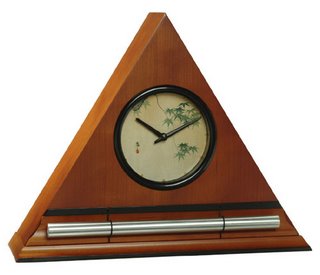 wake up alarm clocks with chimes Now & Zen’s Chime Meditation Timer Store
1638 Pearl Street
Boulder, CO 80302
(800) 779-6383
Posted in intention, mindfulness practice, Now & Zen Alarm Clocks, wake up alarm clock, Well-being
 listening to music can reduce stress A number of studies show that listening to music, especially classical or baroque, may help you unwind and improve your mood.
Though less melodic, therapeutic CDs of “binaural beats” also show promise as a means of calming the mind and body, according to several studies. These recordings work by projecting two tones of similar frequencies into each ear. This creates a “beat” at a certain frequency in the mind, say proponents, and your brain falls in sync with it; different frequencies call forth different moods.
adapted from Body + Soul Magazine, 2010
 Bamboo Natural Chime Sound Alarm Clock  Now & Zen - The Acoustic Chime Alarm Clock Company - Boulder, CO Now & Zen’s Acoustic Chime Alarm Clock Store
1638 Pearl Street
Boulder, CO 80302
(800) 779-6383
Posted in Well-being
« Previous Page — « Previous Entries
Next Entries » — Next Page »
|
|
|
|